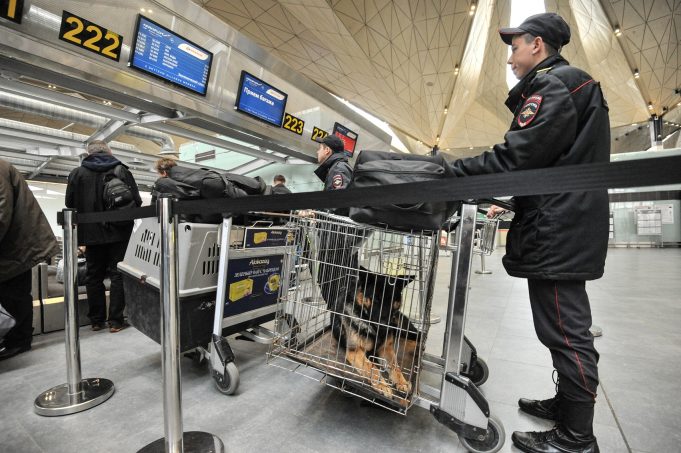What You Need to Know About Flying with Your Dog
Dog lovers the world over would never dream of leaving their pet behind when moving from one city to another or from one country to another. Having subjected my Labrador to three international moves, I do consider myself a bit of an expert and know that both owner and doggy go through a fair degree of trauma!
Domestic travel:
- Airlines like Air India allow very small dogs who can fit into a pet carrier or a soft ventilated bag whose dimensions do not exceed 18”x18”x12”.
- These dogs have to be muzzled and leashed.
- They would be charged as excess baggage and cannot occupy a seat.
- It is better to check with a travel agent on which other airlines would allow pets to travel in the cabin. Rules keep changing on a day-to-day basis.
- In the case of large dogs, one has no option than to have them travel in the pressurized cargo hold. These would be manifest cargo.
- Most airlines allow pets to travel in the cargo hold only.
- The rates for carriage in the cargo hold would depend on many factors.
- One has to be cautious about flying with short-muzzled dogs due to the breathing difficulties they face as well as travel stress they experience. Certain airlines refuse their carriage during extreme heat/cold, while others refuse their carriage any time of the year due to the risk involved.
- The breeds of dogs falling under this category would be
- Boxers, Bulldogs, Mastiffs and Spaniels
- Akita
- Brussels Griffin.
- Chow Chow
- Dogo Argentino
- Fila Brazillero
- Japanese Chin and all other breeds of Pug
- Lhasa Apso
- Pekinese
- Pit Bull
- Rottweiler
- Shar Pei
- Shih Tzu
- Tosa
- There are airlines who do allow these breeds on board, but owners would have to sign a disclaimer waiving responsibility of the airline in case of any health issues.
- Ideally, the smaller varieties, like pugs, should be in the cabin if the airline allows it.
International Travel:
- The first step is to appoint a pet relocating agent. Your vet or travel agent would be able to recommend an experienced agent who knows all the government rules and is conversant with airline requirements as well as those of the country you are relocating to.
- A clearing agent at your destination will also have to be appointed simultaneously.
- It is these agents who will keep you appraised of the paperwork involved at both origin and destination.
- Typically, a health certificate would have to be issued by the local veterinary doctor stating that the animal is healthy and fit for travel by air.
- Keep in mind that certain airlines and countries have weather embargoes in place for the carriage of pets.
- The dog would have to be microchipped.
- All vaccinations would have to be up to date. The dogs have to be vaccinated against Rabies, Distemper, Leptospirosis, Hepatitis, Parvovirus and Parainfluenza.
- The pet carrier should be large enough for your doggy to have space to move around.
- It should be equipped with a moisture absorbent mat at the bottom and have a provision for a food tray and a water-dispensing funnel.
- Ideally the pet carrier should be brought home a week or two in advance to allow your pet to get in and acclimatize itself. A favorite toy will help it to explore the cage.
- A day before travel, exercise and feed your pet well.
- On the actual day of travel, take into account that the pet will be collected much before the time of the flight; feed the pet judiciously and pack enough of your pooch’s brand of pet food so that it lasts for the duration of the journey.
- Details of the pet including its name, photo, feeding instructions as well as the owners address and emergency contact numbers, in a clear plastic envelope, should be firmly affixed to the top of the cage.
- In case of extremely long flights with transit points, airports have animal care facilities where the pet is walked, fed and cleaned up. Frankfurt airport is renowned for its animal cargo lounge.
- Be prepared that your doggy could spend up to a month in quarantine depending on the rules of the country you are moving to. The silver lining is that you can visit your pet every day so that they are not too distressed.












































